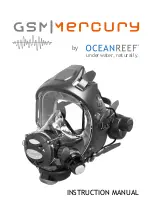
Series 4060
Maintenance
Teledyne
Analytical
Instruments
69
measure resistance between that wire and the remaining
undisturbed terminal. Resistance of the thermistor varies with its
surrounding temperature. A reading of between 10KOhms and
16Kohms at around 25°C may be measured. (Under very cold
conditions, the resistance could be as high as 50KOhms; under
hot conditions, just a few thousand ohms.) If the thermistor
measures anywhere in this range, it is most likely OK.
Otherwise, if the circuit is short or open, check the wires leading
to the thermistor,
2.
Check the heating element by measuring its resistance. Disconnect
one of the heater wires from either terminal 2 or terminal 4 on the
temperature control board P/N B30927, heater wires are black,
and check the resistance between that wire and the remaining
undisturbed terminal. If a reading of approximately 100 Ohms,
then the heating element is most likely OK. If an open circuit is
found, check the heater wires and a possible connector between
the heater and temperature control board. If no problems are
found, and the heater circuit is open, then replace the heater
element.
Note: If any of the components located inside the isothermal
chamber has failed, the instrument must be removed for
service. If no problems are found with either the thermistor
or the heater circuits, then replace the temperature control
board.
5.3 Ignition and/or Flame Guard Circuit Checks
If the flame guard circuit will not hold the flame-out lamp off when
the ignition procedure is employed (see section 4.4
Flame Ignition
),
perform the following procedure to isolate the problem (consult the
system schematic for details of the circuit):
1.
Disconnect the anode-igniter/flame guard thermistor cable from
the socket.
2.
Check the flame guard sensing thermistor by measuring the
resistance between pins J4-3&4 of PCB part number B74671,
disconnect the cable plug. The reading should be about 100 K
Ω
at
room temperature. The actual resistance is not important, since the
thermistor experiences radical changes in resistance as the
temperature changes. No indication in a sufficiently high range on











































